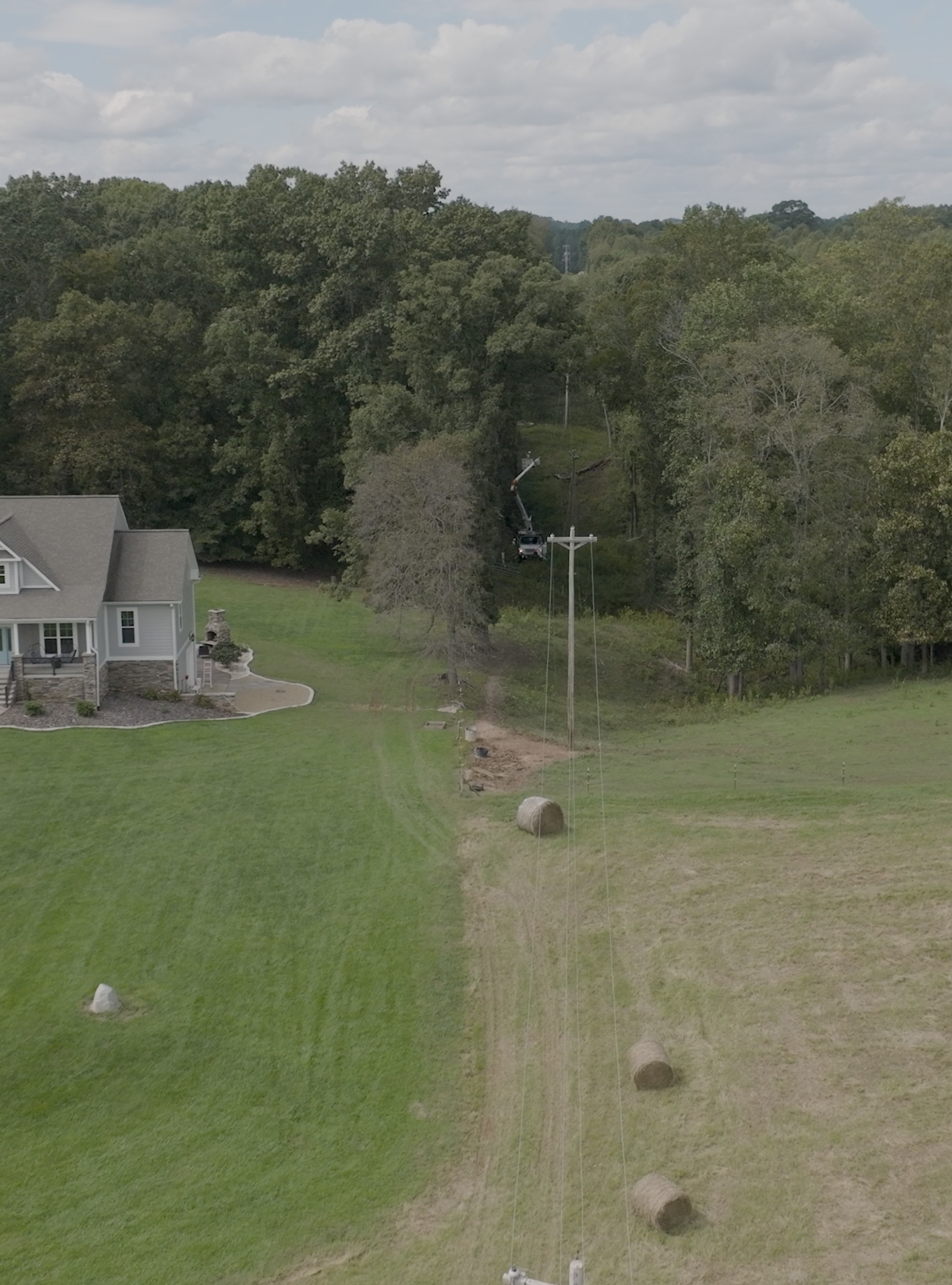
Currently, EnergyUnited maintains 6,000 miles of overhead distribution lines and 200 miles of transmission lines that together supply electricity to over 140,000 member connections within our service territory. This equates to approximately 25,455 acres of distribution and 2,425 acres of transmission corridor that must be patrolled and maintained on a routine basis.
The vegetation management program aims to provide safe, reliable, and cost-effective electricity to our members by limiting the number of interruptions due to vegetation-related issues (like fallen tree branches). Maintaining our right-of-ways ensures that our repair crews can access the power lines to make any necessary repairs and aid in faster restoration times. It’s just one of the ways we maintain a 99.9% reliability rating.
EnergyUnited is challenged with providing safe and reliable service to our members while protecting the environment for today and future generations. EnergyUnited will seek to achieve environmental excellence in maintenance of all distribution and transmission facilities. The cooperative will continue to promote environmental stewardship by the employees and be a leader in protecting and enhancing the environment.
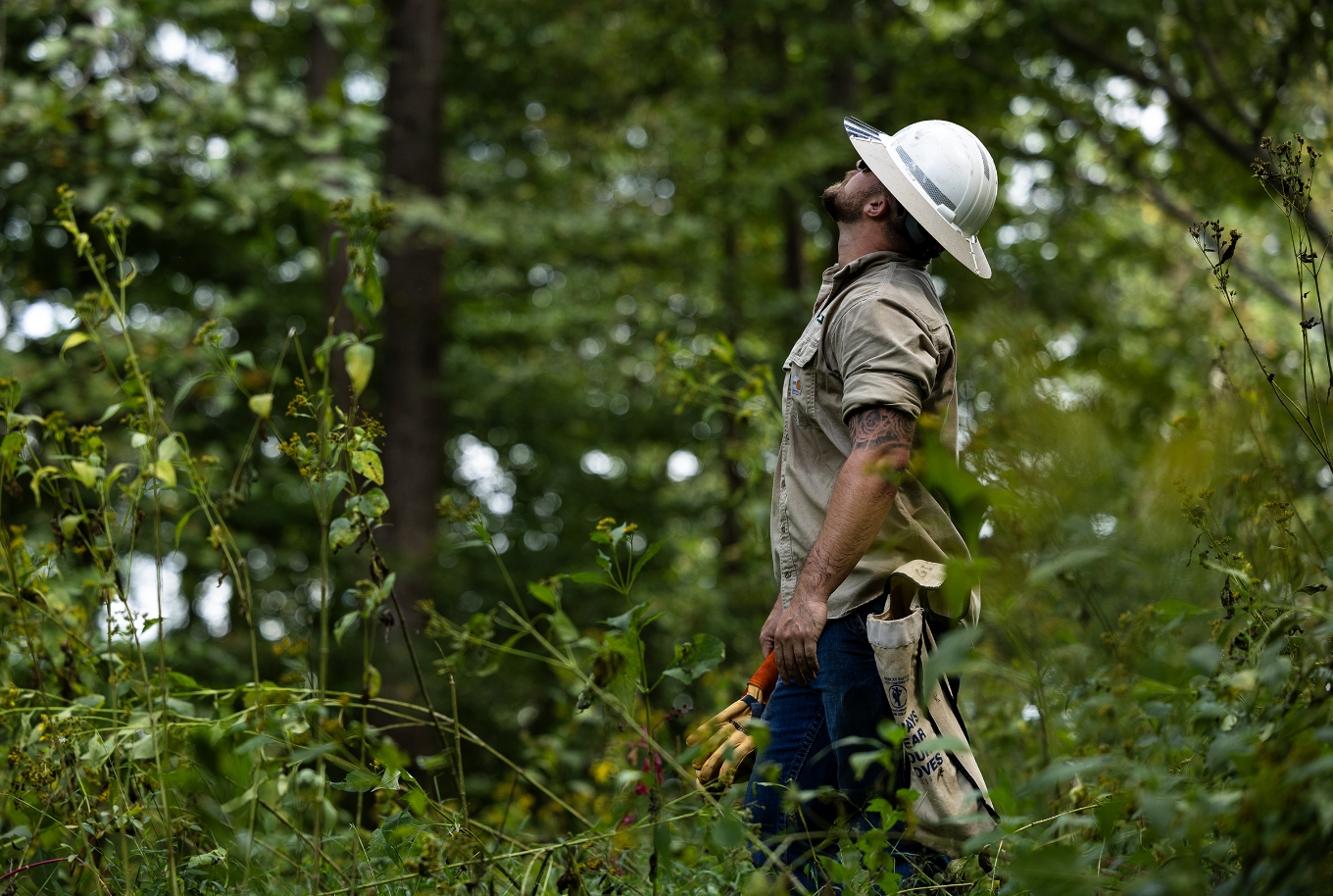
Trees too closeTo a line?
If a tree on your property is encroaching on EnergyUnited power lines, give us a call. We are happy to trim if and where appropriate.
Contact usVegetation ManagementProgram
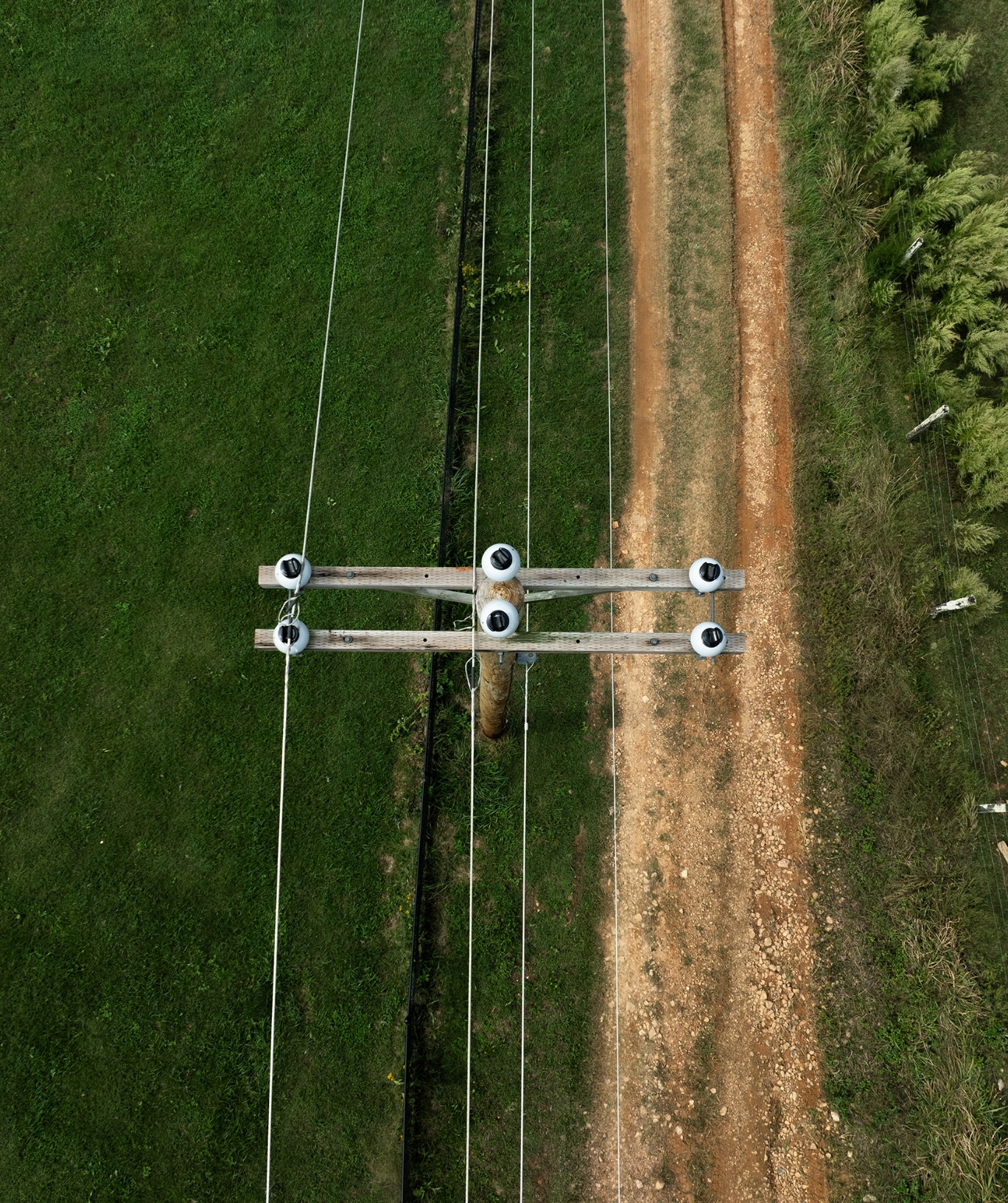
BY THE NUMBERS (JANUARY 1 – APRIL 30, 2025)
Distribution miles planned = 804
Distribution miles re-cleared to date = 400
1,609 Trees removed during circuit maintenance that were located in wire zone.
Removed 856 distribution hazard trees and 76 transmission hazard trees
Aerial transmission protocol in progress
Completed 239 service orders.
Completed 65 New Construction / System improvement orders.
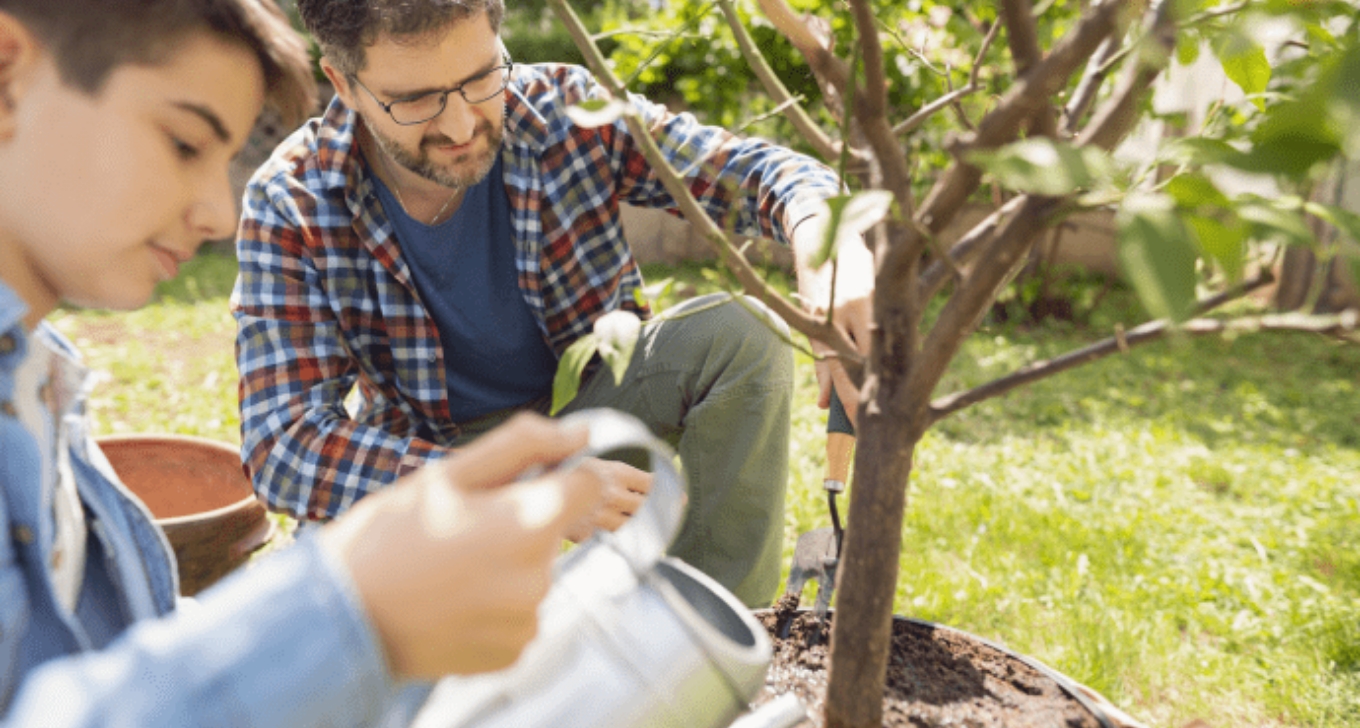
HomeownerPlanting Guide
Learn More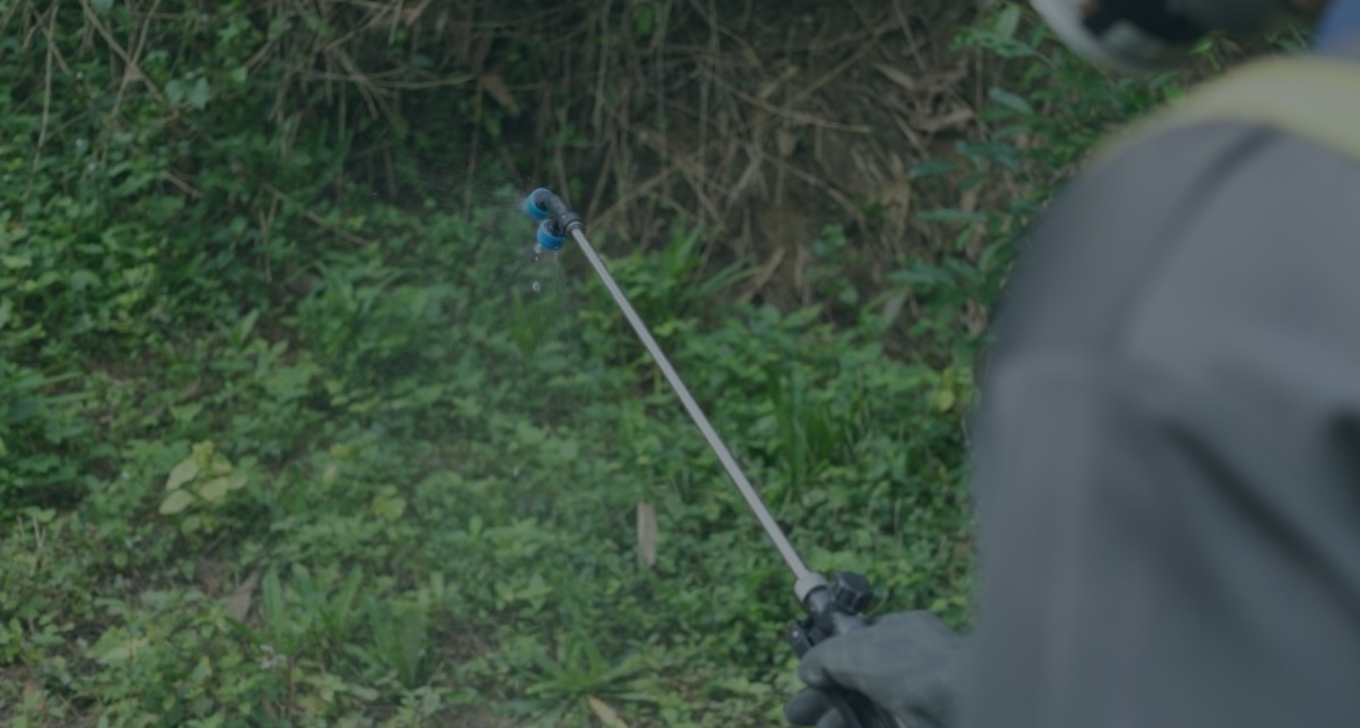
Low volumeHerbicide
Low Volume
Herbicide
Program
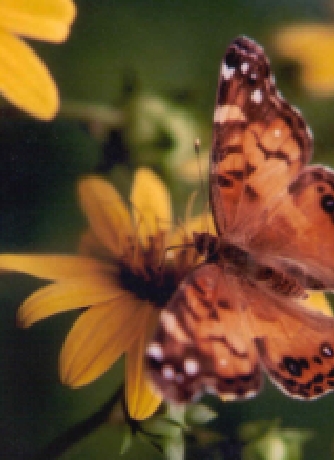
Image: Two endangered species thriving in an EnergyUnited Low-Volume Herbicide treated Right-of-Way: A Monarch Butterfly & Schweinitz’s Sunflowers
In addition to our mechanical re-clearing operations, EnergyUnited utilizes low-volume herbicide applications along its distribution and transmission right-of-ways to control the growth of undesirable tree saplings and woody brush that may interfere with the reliability and operation of our system.
Years of research have determined this method of vegetation control to be an environmentally sound management practice for right-of-way corridors. (You can read the definitive long-term study of LVH here.)
This method actually favors biodiversity, as opposed to using purely mechanical means of control, by establishing a low-growing plant community that provides habitat for flora and fauna that do not thrive in the mature forests that border right-of-ways.
EnergyUnited’s LVH program utilizes North Carolina-licensed applicators from approximately May to October each year to apply a foliar herbicide to undesirable vegetation along selected distribution and transmission right-of-ways. Application methods include low-pressure backpack and truck/utv mounted units, with the vast majority of applications being backpack.
The selective application of herbicides along utility corridors is a time-tested and proven method for controlling stem density and maintenance costs while increasing safety. As compared to repeatedly mowing and hand cutting, which many times serves only to increase the density of brush present (and future maintenance costs).
All the herbicides used in our program are approved by the Environmental Protection Agency. These herbicides are listed below along with their respective EPA registration number and a link to CDMS (Crop Data Management Systems) for label and SDS (Safety Data Sheet) information.
Dow Agrosciences Garlon 3A EPA Reg. # 62719-37
Bayer Method 240SL EPA Reg. # 432-1565
Bayer Escort XP EPA Reg. # 432-1549
Vegitation ManagementFAQs
What rights does EnergyUnited have to maintain their right of way, and can anyone use it?
EnergyUnited is obligated to maintain our facilities to ensure a safe, reliable, and cost-efficient supply of electricity to our members, while also adhering to the rules and regulations that govern the utility industry, such as the National Electric Safety Code (NESC) and the North Carolina High Voltage Safety Act N.C.G.S. # 95-229.5.
Also, members of EnergyUnited have agreed to our Electric Service Rules & Regulations in order to receive electric service. Section 203 of these regulations describes in detail the members’ and EnergyUnited’s responsibilities concerning right-of-way maintenance.
Unless there is a public easement in place, our Right of Way does not grant access to a property for anyone other than EnergyUnited.
What tree debris will be cleaned up?
a. Scheduled Maintenance:
i. What we take away:
- After a tree is pruned in a landscaped area such as yards or pastures, all small limbs & branches smaller than 8-inches in diameter will be chipped and taken away.
ii. What we leave behind:
- Debris that cannot be hauled away (anything larger than 8-inches in diameter) are cut into manageable pieces & stacked at the edge of the ROW or beside the stump for the property owner’s use or disposal.
- Debris in unmaintained areas will be ground up using a mower, and large pieces will be left to naturally decompose.
b. Maintenance requested by customer:
i. What we take away:
- After a tree is pruned in a landscaped area such as yards or pastures, all small limbs and branches smaller than 8-inches in diameter will be chipped and taken away.
ii. What we leave behind:
- Debris that cannot be hauled away (anything larger than 8-inches in diameter) are cut into manageable pieces & stacked at the edge of the ROW or beside the stump for the property owner’s use or disposal.
c. Dead trees:
i. EnergyUnited nor its contractors haul off any dead trees that have been cut down or have fallen.
d. Stumps:
i. EnergyUnited does not grind stumps of trees that have been taken down. EnergyUnited contractors will cut all stumps 2-inches or lower to the ground, unless there is metal or a foreign substance that has grown into the tree that will prevent the stump from being cut.
Who owns the land under the power line?
EnergyUnited does not own the land underneath the power line on your property. However, a utility easement allows us the right of ingress, egress, and regress in order to perform certain functions necessary to maintain our system. This includes, but is not limited to, the controlling of trees and undergrowth that EnergyUnited feels may interfere with or hinder the installation and/or restoration of electric/communication service.
What determines the width that you cut?
The width that the right-of-way is maintained at depends on many factors such as, but not limited to, tree species, growth rate, length of re-clear cycle, single or multi-phase line, and conductor sag. On average, we allow for about 2.1’ of growth per year, placing us at an average of seven years between re-clearing operations. This equates to clearing 20’ either side of the centerline on multi-phase construction and 15’ either side of centerline on single phase construction. The exception to this rule is large, rapid-growing species planted close or directly under our primary facilities causing EnergyUnited to perform mid-cycle trimming to ensure safe reliable service.
How often do you cut rights-of-way?
Currently, EnergyUnited maintains a seven year cycle on Distribution lines (residential) and a 12-15-year cycle on Transmission lines. We also perform reactive or service order-generated tree trimming on a limited, as-needed basis.
Will I be notified prior to right-of-way maintenance?
EnergyUnited and its contractor will make an effort to notify every member impacted by right-of-way maintenance (with a door hanger notification) a minimum of 2-3 working days prior to maintenance. However, after a reasonable amount of time has passed, maintenance will have to proceed whether or not we have been able to make contact.
I have received a door hanger at my residence. What do I do with it?
The door hanger you received is one of the most important parts of our maintenance program. On this pamphlet you will find the contact number for the General Foreman of the crew that will be performing maintenance in your area, as well as a brief description of the work to be performed. You will need to use this information to contact our contractor if you wish to schedule a time to discuss maintenance on your property prior to its completion.
Who is responsible for the overhead service drop coming from the transformer to my house?
EnergyUnited is not responsible for trimming or removal of any trees located within the member’s service drop line. We will, however, lower the lines to allow the safe removal/trimming of the tree if notified 2-3 business days in advance. If other facilities, such as phone or cable lines are an obstacle, then it will be the member’s responsibility to contact these providers in order to have them lowered.
Will EnergyUnited trim around my security light or the power lines near homes, not just the roads?
EnergyUnited does not routinely trim around security lights. However, given 2-3 days’ notice, we can have a security light service disconnected and/or lowered so that members can trim, or have a private tree contractor trim around the light.
Primary lines are uncovered wire at higher voltages while lines running overhead and connecting directly to your home are primarily coated secondary lines (triplex wire). The voltage in these lines has been reduced by a transformer to the same voltage you will use inside your residence. Light contact by small limbs will generally have no effect on these lines. Also, technically, there is no easement or right of way for secondary lines, as you either wish to have service or you do not. EnergyUnited has no specific maintenance plan in place for these lines, but will perform vegetation maintenance along these lines if a load-bearing situation is present or there is determined to be some other extenuating circumstance that warrants our involvement. If a member wishes to have tree work performed along these lines that EnergyUnited determines is outside of our scope of work, they can schedule to have the service disconnected and lowered while the work is completed, and then re-installed at no charge during normal working hours. Please give us at least a 2-3 day notice if you wish to have this done.
Who gets the mulch/chips left from the trimming?
As our crews perform right-of-way maintenance in your area, you may request wood chips (using the appropriate contact info on your door hangar). It will be the Member’s responsibility to communicate with our contractor and mark the location that you want the chips dumped. It’s important to remember that these chips are from many different species of tree and that they are only delivered in full loads, roughly equivalent to 3-4 long bed pick-up truck loads. Once you have taken delivery of the chips, EnergyUnited or our contractor has no way of removing them from your property.
Why will EnergyUnited or its contractor not round over or top my tree?
While a common practice in the past, rounding over is now considered a discredited practice in the tree care industry. It’s performed by making a series of heading cuts between laterals in order to give the tree a more symmetrical appearance. The result, though, is a weakened tree more susceptible to infection and decay. This practice also encourages prolific sprouting in some species that requires multiple trimmings mid-cycle.
Will EnergyUnited clean up debris related to a storm event?
During a severe weather event crews will only remove storm-damaged trees and debris from EnergyUnited facilities in order to aid in the restoration process. Clean up of residual debris will be the responsibility of the property owner.
Can I trim my own trees or hire a private contractor to trim the trees near the power lines?
If you are not a qualified line clearance arborist or have not hired one, it is recommended that you do not attempt to trim any tree that is within 10’ of a high voltage distribution or transmission line (Article 19A Overhead High-Voltage Safety Act NC General Statute 95-229.5). These lines are capable of causing severe injury or death through direct or indirect contact. If you’re planning to prune or remove a tree that is within 10’ of a high voltage facility, you can contact EnergyUnited to assist with evaluating your situation.
What types of trees/shrubs can be planted adjacent to underground distribution equipment, and are there trees and plants that can help with energy saving?
Compact, low-growing vegetation can be planted around underground equipment. Please be sure to follow the guidelines that are attached to the equipment itself, which specify distances and clearances with detailed illustrations. If the labels specifying clearances for vegetation are missing from the equipment in question, please contact EnergyUnited for assistance. Do not plant vegetation in a manner that completely obscures the facility from view or prevents the servicing or operation of the equipment.
For energy saving, members can plant deciduous plants on both sides of the home along the path of the sun to block radiant energy from the sun. Incorporate large and small species in order to block both morning and midday sun. For winter, plant a break perpendicular to the prevailing wind utilizing a species that is evergreen and has a crown extending to the ground. It is said the greatest benefit in wind reduction occurs 2-5 times the height of the trees downwind from the break. So, if your trees will reach 40′ in height they need to be planted 80-200′ from your home. Remember to avoid planting trees under or next to power lines. Any trees that can provide energy savings will be much too large to coexist close to overhead power lines.
How often do you apply herbicides along your right-of ways?
Distribution lines
Generally, herbicides are applied one to one-and-a-half growing seasons after a full cut cycle, on residential distribution lines. After that, herbicides may be applied to the same area once more, depending on the density of the brush along that particular section of line. Distribution lines, on average, will be selectively treated twice per trim cycle.
Transmission lines
Just like residential distribution lines, transmission lines will be treated one to one-and-a-half growing seasons after a full cut cycle. Following this, they may receive 3-to-5 more treatments, over the course of the next 10-15 years, before being re-trimmed and mowed. This is due to the fact that the mechanical re-clearing maintenance cycle is much longer than that of a distribution line, due to the greater width of our transmission line corridors.
What herbicides do you use to control brush along your right-of ways?
Please refer to the LVH (low volume herbicide) section above, where you will find listed the herbicides we use and a link to their label and SDS (Safety Data Sheet).
